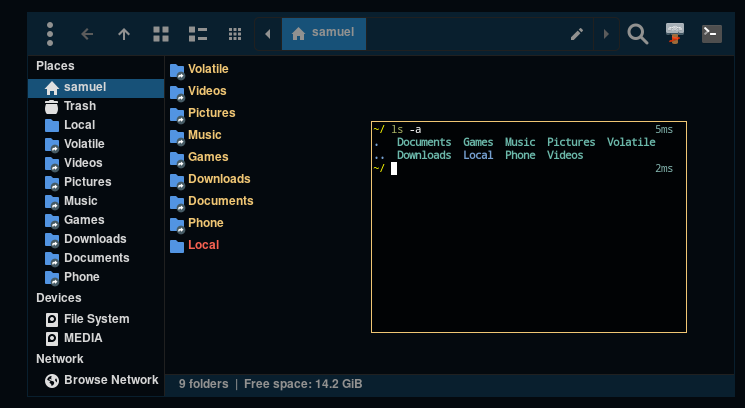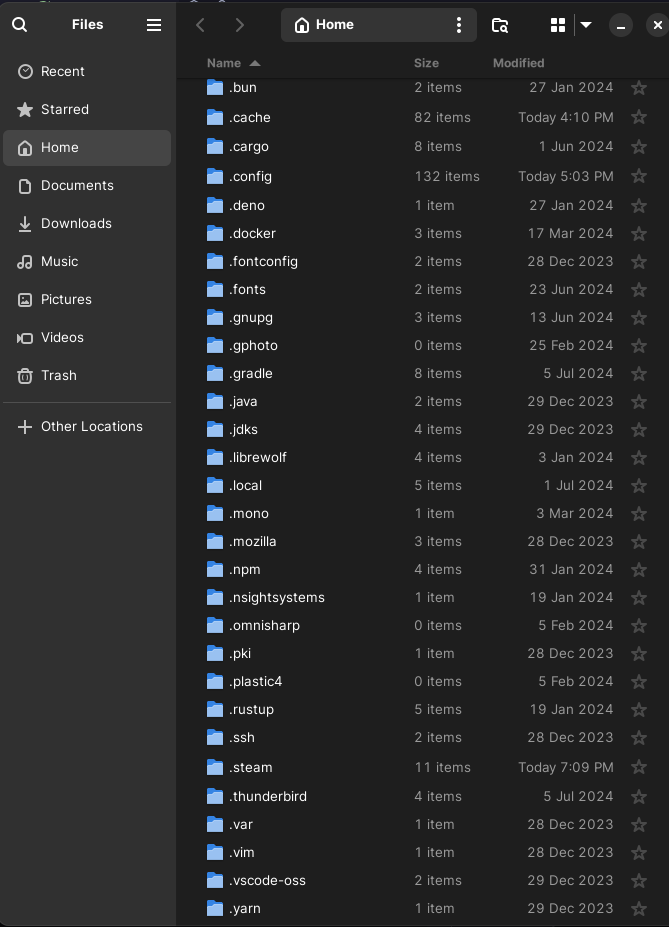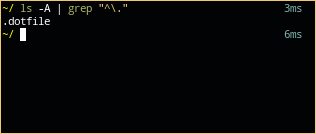- cross-posted to:
- [email protected]
Golang puts shit specifically in
$HOME/go. Not even.go. Just plaingo.Why is it so difficult to follow industry standards
That’s what happens when you don’t set $GOPATH I think
That doesn’t make it better.
It makes it insofar better to me that you have the option to change it. You can’t change Mozilla programs to use anything but .mozilla (apart from modifying the source code of course) so for me seeing the folder is at least a way of telling me that the variable is unset.
The better question is which folder is suited the best to store the stuff that goes into $GOPATH
Just because something is worse, doesn’t make the other thing good. A sane and standard default, as others have mentioned, is a small bar to meet.
Of course, but that’s not the point. There should be a sane default, and there isn’t one
Go pisses me off with that. I separate projects the way I want but go wants every project written in go in one big directory?
I really didn’t like this either. It’s quite surprising, because the rest of Go tooling is quite nice. Not having a venv, or at least something like pnpm-style node_modules is weird
Why would go have a virtual environment or dep tree like node_modules equivalent, it’s not interpreted or dynamically linked.
With modules, dependencies can be vendored.
Obviously it’s not, but you have to download all this shit somewhere before compilation. That’s the whole point
Google
following industry standards
pick one
This post literally links to the leading one.
off the shelf go was too annoying for me
Nowadays I set GOENV_ROOT to an XDG location and use goenv instead.
deleted by creator
What I want in
$HOMEare the following directories:If I’m on a GUI-based environment:
- Desktop
- Documents
- Downloads
In general:
- .local
- my_junk_folder_i_made
I’d like everything else to live within something like ~/.local thanks
Maybe Linux should have
.localand.roamingfolders like Windows. local = only useful on this system, roaming = good to sync across systems. Config would be in.roamingif it’s not machine-specific.The only practical difference between Local and Roaming and LocalLow is that developers randomly pick one and dump your game saves in there.
Does
~/.configfit the bill for the second one?There’s some stuff in
~/.configthat’s specific to the computer. KDE is a good example - a lot of KDE apps mix config and state in the same file. There’s some solutions for syncing these files, like https://github.com/VorpalBlade/chezmoi_modify_manager which is an addon to Chezmoi that can exclude particular keys when storing an INI-style config file in Git.I’m sure there’s some config files in there that are entirely specific to the computer. Things like the Wayland per-monitor scaling settings are in there somewhere I think.
There’s also things like data files that you may want to keep in sync across machines. They’re not really configs.
There is a
.localfolder these days.Profile roaming hasn’t been solved aside from NFS mounts. I guess Syncthing might work.
I know
.localexists - My comment was more about.roamingwhich would be nice to exist, but doesn’t currently exist.Profile roaming hasn’t been solved aside from NFS mounts. I guess Syncthing might work.
I’m using Chezmoi to sync some dotfiles, scripts, etc. to a Git repo and that seems to work well enough for me. I’m not syncing much yet, though.
Shout out to xdg-ninja - it’ll find files that are in your home and suggest how to configure the app to use XDG instead. https://github.com/b3nj5m1n/xdg-ninja
Strange that some apps allow configuring it rather than just doing it automatically…
That’s the usual open source way. The config probably came later so they just added the option without changing the default because that would break backward compatibility.
And there would be too much boring work to build a migration.
Thanks, I hadn’t heard of that. Time to add a few hundred lines to my dotfiles :)
After running it and properly configure the paths I once again came to the conclusion: I fucking hate Google.
I wish they used them all, especially
XDG_CACHE_HOMEwhich can become pretty big pretty fast.And i wish there was a separate XDG_LOG_HOME or $HOME/.local/log, with logrotate preconfigured to look there.
Or
$HOME/.var/log.
100% agree and I also despise devs who do this on windows, instead of using %appdata% they’re using c:\users\username\.myappisimportantandtotallydeservesthisdir
I have to use a separate Documents folder for my actual documents lol
Not to mention - this isn’t necessarily the correct place for Windows anyway. That is exactly why they standardized stuff around Vista.
Plus - what about apps that store an ungodly amount data in there? Personally, I only keep the OS and basic app data (such as configs and cache) on the partition and nothing else.
Then something like Minecraft comes along and it’s like “humpty dumpty I’m crapping a lumpty” and stores all its data in “.minecraft” right there in your user directory.
Then you gotta symlink stuff around and it becomes a mess…
I think that also causes issues for roaming profiles and folder redirection. If roaming is turned on then everything in the %appdata%\roaming folder is synced to a server. %AppData%\Local is not. So if your app is using %AppData%\Roaming for temporary data then you are causing a whole bunch on unnecessary IO. Same for using Documents since that if often synced.
To be fair here, appdata is technically a hidden folder and there are lots of reasons an app would want it’s data accessable by the user.
Yes but then just spam the documents folder like anyone else, don’t hoard the home root for no reason except that is a lazy cross platform port
I didn’t know about this (and thankfully, haven’t written anything public). I’ve been trying to fix an install script for an OSS project that doesn’t work on immutable distros, and using the XDG Base Directory specs might just be the panacea I was looking for!
Where did i read this… basically, the .file being hidden being a bug in the early unix filesystem, which got misused to hide configuration files.
Offenders despite XDG-variables set and with no workaround:
- .android: hardcoded in adb and i guess something in mtp too
- .pki: some tool/library Firefox and Chromium sometimes use.
- .steam: yes, that
Shameless flex

I regret checking this

Whoa I’m a stickler for getting as much as I can out but even I have .zshenv and some other too hard to figure out things in there. How’d you manage a total wipeout?
zsh is actually easy and it is detailed in the archwiki
You have to set
$ZDOTDIRin/etc/zsh/zshenvand iirc that was the only location that required root to edit.For the rest of stuff, here is how I fix steam for example and you can check the rest of my dotfiles for how I configured zsh and all of that.
Although I haven’t updated them, I still had a
.localdirectory back then, it was 1 week ago that I changed.localforLocaland that let to an issue with distrobox which I made a PR fixing it that’s still open though.That’s awesome!
This is probably a dumb question, but what program is that?
Looks like thunar (default file manager on xfce)
thunar (and the smaller window is the xfce4-terminal).
Lol, the minimalist window decoration had me thinking you were running a terminal inside of the home directory of your file manager. :D
I’ve seen weirder things.
Honestly, that’s what I thought too, and wanted to check that out
ls VolatileIt’s empty lol, it’s a directory on tmpfs that i use to build programs and similar stuff to not be hammering my ssd with unnecessary writes.
I have
$XDG_CACHE_HOMEin tmp as well and I moved the mesa sharer caches to$XDG_STATE_HOMEas that’s really the only thing so far I’ve needed to preserve.tmpfs (…) to build programs (…) to not be hammering my ssd with unnecessary writes
Sounds useful. How did you setup the directory?
Running
dftells me “tmpfs” is mounted on /run. If I build in that that directory then would it be stored in RAM, or do I need to do something else?I have /tmp in my fstab with these mount options.
tmpfs /tmp tmpfs rw,noatime,size=20G 0 0And the rest of the setup is done in my zprofile
I think I should be able to get this working following your zprofile file. Thanks!
Here is a more concise way to achieve the same thing:
ls -ACd ~/.??*/ | sed -e "s#$HOME/##g"I think that can be boiled down to only
cd; echo .*/Maybe throw a
;cd -on the end if the change of directory is unwanted.if you need to preserve
cd -you might be able to do this withpushdandpopd
ls -A | grep "^\."
I had to make a dummy
.dotfileto test because I don’t have hidden files in my home.
My fellow FOSS users, patches are welcome.
there’s no place like 127.0.0.1
there’s no place like XDG_CONFIG_HOME.
YOU’RE NOT MY MOM I’LL DO WHAT I WANT
vim now has an option to put the .vim folder in ~/.config; though I’m not sure if the default plugin/package & syntax folders can be set under ~/.local/share.
You can also just use neovim instead, among other improvements, it’s configs are in the xdg dirs
حق
deleted by creator
yes please!



















